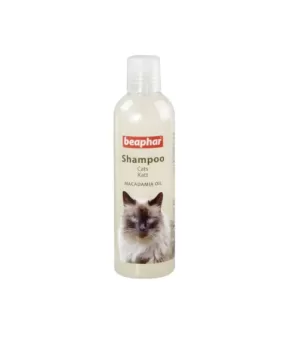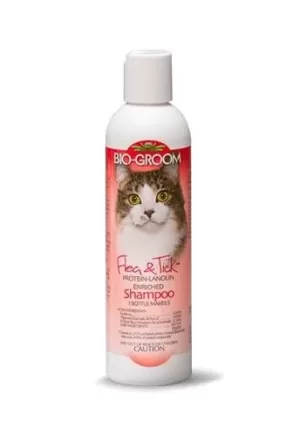Cats are adorable and furry companions that bring joy to our lives. Just like us, they need proper grooming to stay healthy and comfortable. Cat shampoo is an important tool in maintaining your furry friend’s cleanliness.
In this, we’ll explore the why, when, and how of using cat shampoo, ensuring your kitty stays fresh and happy.
Why Use Cat Shampoo?
Cats are naturally clean creatures and spend a significant amount of time grooming themselves. However, there are times when they need a little extra help. Cat shampoo serves several purposes:
- Removing Dirt and Odors: Cats can get into all sorts of messes, from exploring dusty corners to accidentally rolling in something smelly. Cat shampoo helps remove dirt and odors that your cat might not be able to tackle on their own.
- Treating Skin Issues: Some cats might develop skin problems like dryness, dandruff, or even allergies. Specialized cat shampoos can help soothe these issues and keep their skin healthy.
- Fighting Fleas and Ticks: Cat shampoos formulated with flea and tick repellents can help keep these pesky parasites away.
- Shedding Control: If your cat sheds a lot, certain shampoos can help minimize shedding and hairballs by improving the health of their coat.
-
 Animology Cat Shampoo Papaya 250mlAED 35.00
Animology Cat Shampoo Papaya 250mlAED 35.00 -
 Beaphar Shampoo Macadamia for Cats 250 mlAED 33.00
Beaphar Shampoo Macadamia for Cats 250 mlAED 33.00 -
 Bio Groom Flea & Tick Cat Shampoo 235mlAED 50.00
Bio Groom Flea & Tick Cat Shampoo 235mlAED 50.00
When to Bathe Cat
Unlike dogs, most cats don’t need frequent baths. Their self-grooming habits are usually sufficient. However, there are instances when bathing becomes necessary:
- Emergencies: If your cat gets into something sticky or toxic, a bath might be necessary to prevent them from ingesting harmful substances while grooming.
- Skin Issues: If your cat has skin problems like excessive itching, rashes, or infections, your vet might recommend bathing as part of the treatment plan.
- Special Occasions: Cats participating in cat shows might need a bath to look their best.
- Long-Haired Breeds: Cats with long hair might need occasional baths to prevent matting and tangles.
How to Bathe Cat
Bathing a cat can be a challenge, but with patience and the right approach, it can become a manageable task:
- Gather Supplies: Prepare everything you need before bringing your cat into the bathroom. You’ll need cat shampoo, towels, a non-slip mat for the tub or sink, and treats for positive reinforcement.
- Water Temperature: Make sure the water is lukewarm, not too hot or cold. Cats are sensitive to temperature changes.
- Introduction: Gently introduce your cat to the water before fully immersing them. Use a calm and soothing tone to keep them relaxed.
- Shampoo Application: Use a cat-specific shampoo. Apply a small amount and gently lather, avoiding their face and ears. Be careful not to get shampoo in their eyes or ears.
- Rinsing: Thoroughly rinse your cat, ensuring no shampoo residue is left on their fur. Leftover shampoo can cause skin irritation.
- Drying: Wrap your cat in a towel and gently pat them dry. If your cat tolerates it, you can use a hairdryer on the lowest setting, keeping it at a safe distance to prevent them from getting scared.
Overall
Cat shampoo is a valuable tool for maintaining your cat’s hygiene and health. While not all cats enjoy baths, proper technique and patience can make the process easier for both you and your feline friend.
Remember, always choose a cat-specific shampoo, and consult your veterinarian if you have any concerns about your cat’s skin or coat. With a little care, your cat will stay fresh, clean and happy!







